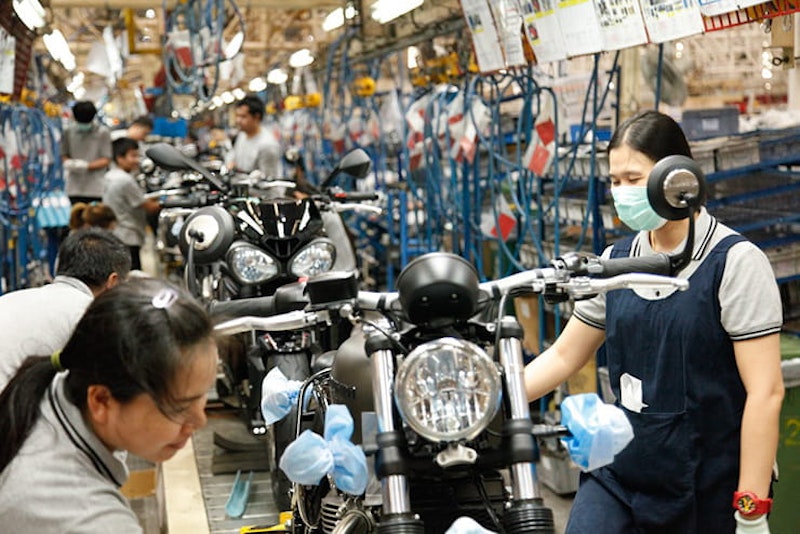
How to Detect Flaws in Metallic and Custom Motorcycle Paint Jobs?
Share
When it comes to motorcycles, nothing enhances the experience quite like a flawless paint job. For tech professionals and enthusiasts alike, detecting flaws in metallic and custom motorcycle paint jobs plays a critical role in ensuring that your bike maintains its aesthetic appeal and value. In this article, we will dive deep into the nuances of identifying imperfections in motorcycle paint, the technology used for inspections, and tips for achieving that perfect finish.

Understanding the Importance of Quality Paint Jobs
A well-executed paint job can transform a standard motorcycle into a stunning piece of art. Quality paint not only enhances the visual appeal of the bike but also serves as a protective barrier against environmental factors. Flaws in the paint can lead to corrosion, discoloration, and can detract from the overall appearance.
Whether youre an avid collector, a tech enthusiast, or a professional seeking precision, understanding how to identify and rectify flaws is paramount. Potential flaws include dust inclusions, orange peel texture, runs, and poor adhesion. The challenge lies in spotting these imperfections before they become a greater headache down the line.
Common Flaws Found in Metallic and Custom Paint Jobs
1. Dust and Debris Inclusions
Dust and debris can easily settle on the surface before or during the painting process, leading to small imperfections. These inclusions can be challenging to spot under normal lighting conditions.
2. Orange Peel Texture
This term refers to a surface texture resembling the skin of an orangeessentially, it indicates that the paint was not applied evenly. This flaw can significantly detract from the overall finish.
3. Runs and Sags
Paint runs happen when excess paint accumulates. Solving this issue requires careful attention to the painting process to ensure consistent application.
4. Poor Adhesion
Poor adhesion often results from inadequate surface preparation or incompatible paint types. Detecting lack of adhesion early on can save a lot of time and resources.
Techniques for Detecting Flaws
When it comes to detecting imperfections in motorcycle paint, technology has come a long way. Various methods and tools can help in identifying flaws effectively:
1. Visual Inspection
Start with a thorough visual inspection. Check under different lighting conditions to see if any flaws are visible. Use a soft cloth to gently run over the surface to feel for any uneven textures.
2. Electronic Measurement Tools
Devices like paint thickness gauges can provide precise measurements on how thick the paint is in different areas. Variations can indicate unevenness or flaws in application.
3. Color Matching Tools
Some advanced tools can help match colors and identify mismatches or inconsistencies in the paint job, which can be critical for metallic finishes.
4. Professional Inspection Systems
Automated inspection systems, like those described in this automated paint inspections, are designed to sense and pinpoint flaws in paint jobs quickly and accurately.
Tips for Achieving a Flawless Finish
1. Surface Preparation is Key
Ensure that the surface is cleaned and prepped accordingly before applying any paint. Sanding and priming can make a world of difference.
2. Choose Quality Paint
Invest in high-quality paint specifically designed for motorcycles. The right product will adhere better and offer more durability.
3. Control Your Environment
Painters should ideally work in a controlled environment to minimize dust and other airborne contaminants. Using a spray booth can be beneficial.
4. Multiple Thin Coats
Applying multiple thin coats instead of one heavy coat can help avoid flaws like runs and sags.
The Role of Technology in Flaw Detection
Innovations in technology are revolutionizing the way we achieve and inspect paint jobs for motorcycles. For example, AI and machine learning are now being integrated into the inspection process to detect flaws that might be invisible to the human eye. Tools that combine AI-driven solutions with high-resolution imaging can effectively reduce the margin of error.
Conclusion
Detecting flaws in metallic and custom motorcycle paint jobs isn't just for the professionals; its valuable knowledge for any motorcycle enthusiast looking to maintain the beauty and longevity of their investment. By understanding common flaws, employing advanced methods for detection, and utilizing the right tools, you can ensure that your motorcycles paint job is nothing short of perfect.

FAQs
1. What are the most common types of flaws in motorcycle paint jobs?
The most common flaws include dust inclusions, orange peel texture, paint runs, and poor adhesion.
2. How can technology help in detecting paint flaws?
Technology like electronic measurement tools and AI-driven inspection systems are equipped to quickly identify defects that may be difficult to spot manually.
3. Why is surface preparation important before painting?
Proper surface preparation ensures that the paint adheres well and minimizes the risk of flaws, such as runs or uneven texture.
